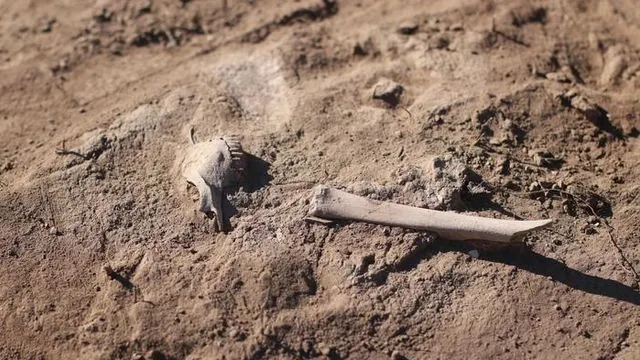
Ancient Sheep Unleash Secrets of a Prehistoric Plague: What Scientists Discovered Will Shock You!
2025-08-12
Author: Arjun
In a groundbreaking discovery, researchers have traced a 4,000-year-old strain of plague to domesticated sheep, shedding light on a mysterious epidemic that swept across Eurasia. Known as the LNBA plague, this ancient strain disappeared around 2,000 years ago, leaving experts puzzled about its origin and how it spread.
The Origins of the LNBA Plague
Emerging roughly 5,000 years ago, the LNBA plague wreaked havoc on human populations for nearly three millennia before seemingly vanishing into the annals of history. Unlike the infamous plague strains of later centuries, this ancient variant lacked the genetic tools typically responsible for its spread via rats and fleas. This raises a compelling question: what was the true reservoir of this prehistoric disease?
A Hidden Connection Between Humans and Livestock
An international team of scientists from top institutions, including the Max Planck Institute and Harvard University, investigated Bronze Age sheep remains from the site of Arkaim in Russia. Their findings revealed the sheep was infected with the same plague strain that affected people at the time. Dr. Taylor Hermes from the University of Arkansas noted that the Sintashta culture, known for extensive livestock herding, offered a unique setting for investigating these ancient infections.
Comparative analysis of the sheep's Yersinia pestis genome mirrored infections found in nearby human populations, suggesting a close link between the two. The findings imply that both humans and livestock were susceptible to the same plague lineage—meaning they may have shared a dangerous infectious cycle.
How Did the Plague Spread?
The study suggests that sheep were exposed to the plague through contact with infected wild animals, possibly rodents. Dr. Christina Warinner explained that in regions with endemic plague, sheep can contract the disease from contact with infected carcasses. This could lead to local outbreaks among humans, forming a connection between ancient pastoralists and the disease.
Unveiling the Mystery of Ancient Pathogens
This shocking discovery is just the tip of the iceberg. While researchers found that the LNBA plague was evolving under strong constraints, indicating it may have originated from unknown natural reservoirs, further investigation is necessary. Over 200 Y. pestis genomes have been identified from ancient human remains, but identifying the true reservoir remains elusive.
Dr. Felix M. Key, a leader in the study, emphasized that understanding how the plague managed to spread across vast distances in a short time frame remains a mystery. With archaeological digs constantly yielding valuable remains, the potential for new discoveries about ancient pathogens is significant.
What Lies Ahead?
As researchers continue to delve into the secrets buried within ancient animal bones, we can expect to uncover more about how zoonotic diseases impacted human history. This remarkable study not only enhances our understanding of animal-human disease transmission but also opens new avenues for future research into ancient pathogens.
Indeed, the quest to pinpoint the LNBA plague’s origins is ongoing, and with each study, we gain a clearer picture of how closely our fates are intertwined with those of the animals we domesticated.


 Brasil (PT)
Brasil (PT)
 Canada (EN)
Canada (EN)
 Chile (ES)
Chile (ES)
 Česko (CS)
Česko (CS)
 대한민국 (KO)
대한민국 (KO)
 España (ES)
España (ES)
 France (FR)
France (FR)
 Hong Kong (EN)
Hong Kong (EN)
 Italia (IT)
Italia (IT)
 日本 (JA)
日本 (JA)
 Magyarország (HU)
Magyarország (HU)
 Norge (NO)
Norge (NO)
 Polska (PL)
Polska (PL)
 Schweiz (DE)
Schweiz (DE)
 Singapore (EN)
Singapore (EN)
 Sverige (SV)
Sverige (SV)
 Suomi (FI)
Suomi (FI)
 Türkiye (TR)
Türkiye (TR)
 الإمارات العربية المتحدة (AR)
الإمارات العربية المتحدة (AR)